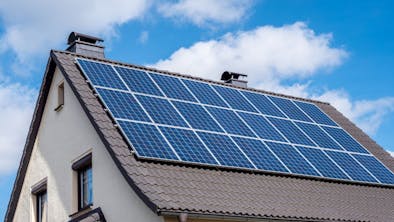© 2025 BuilderBarb.com
All Rights Reserved
This site is not a part of the Facebook website or Facebook Inc.
Additionally, this site is NOT endorsed by Facebook in any way.
FACEBOOK is a trademark of FACEBOOK, Inc.
This site is not a part of Google™ website or network of sites such as
Youtube™ or any company owned by Google™ or Youtube™.
Additionally this website is not endorsed by Google™ Youtube™ Inc. in any way.
Google™ is a trademark for all their respective companies.

The Essential Guide to Going Off-Grid:
A Step-by-Step Journey to Self-Sufficiency
Choosing to live off the grid is not just a residence change; it’s a lifestyle transformation that encompasses economic, environmental, and personal benefits. This lifestyle promotes a sustainable relationship with the environment, fosters community and self-reliance, and offers a pathway to a healthier, more fulfilling life. As more people seek sustainability and independence, off-grid living provides a compelling blueprint for a resilient, responsible, and rewarding way of life.
Environmental Benefits
• Reduced Carbon Footprint: Living off the grid typically involves using renewable energy sources such as solar, wind, or hydroelectric power. This shift from fossil fuels to renewable energy significantly reduces one's carbon footprint, directly contributing to the fight against climate change.
• Sustainable Resource Use: Off-grid living encourages the efficient use of resources. Rainwater harvesting, solar heating, and the use of energy-efficient appliances are common practices that promote sustainability.
• Biodiversity Preservation: Off-grid homes are often situated in rural or untouched areas where residents take an active role in preserving the natural landscape and its biodiversity, contrasting sharply with the habitat destruction often associated with urban development.
Economic Benefits
• Cost Savings: While setting up an off-grid home can require an upfront investment in renewable energy installations and other systems, the long-term savings are substantial. Residents save on utility bills, energy costs, and often food expenses if they grow their own produce.
• Increased Property Value: As sustainable homes become more desirable, properties that offer fully functional off-grid systems and a sustainable lifestyle can see increased market values.
• Economic Independence: Living off the grid decreases reliance on the economic system’s fluctuations and crises. By minimizing dependence on paid utilities and corporate food sources, off-grid residents can achieve a greater level of economic autonomy.
Health and Well-being Benefits
• Cleaner Environment: Off-grid living often involves a cleaner living environment. The use of natural building materials, organic gardening practices, and the absence of industrial pollution can contribute to better health.
• Physical Fitness: The physical activities associated with maintaining an off-grid home—such as chopping wood, tending to a garden, and managing water systems—can keep individuals physically active and fit.
• Mental Health Improvements: Many people find that closer proximity to nature and a slower pace of life improve their mental health. The reduction of stress associated with urban environments can lead to a more peaceful and contented life.
Social and Community Benefits
• Stronger Community Ties: Off-grid communities often rely on mutual aid and shared resources, fostering stronger bonds among residents. This close-knit community structure can provide a robust support system.
• Skills and Education: Living off the grid requires a range of skills from electrical work to agriculture. Learning and passing on these skills not only ensures independence but also strengthens community knowledge and self-reliance.
• Cultural Preservation: Many off-grid communities place a strong emphasis on preserving traditional skills and crafts, contributing to cultural richness and diversity.
Personal and Spiritual Benefits
• Freedom and Independence: One of the most profound benefits of living off the grid is the sense of freedom it provides. Residents are not tied to utility companies, can design their own homes, and choose their lifestyle according to their values.
• Self-fulfillment and Empowerment: Managing one’s own utilities and food production fosters a strong sense of competence and achievement. For many, this leads to significant personal growth and fulfillment.
• Connection with Nature: Living off the grid enhances one’s connection with the environment. This close relationship with nature can be spiritually uplifting and deeply satisfying.
Living off-grid represents a profound shift towards self-reliance, sustainability, and a significant departure from the conventional reliance on public utilities. This lifestyle attracts those eager to reduce their carbon footprint, assert control over their environment, and live a life less dependent on the societal grid. Here’s a detailed, step-by-step guide to help you transition smoothly to an off-grid lifestyle, covering all critical aspects from planning to execution.
Step 1: Research and Planning
Assess Your Needs and Goals:
Begin by defining what living off-grid means for you. Do you wish to disconnect completely from all municipal services, including electricity, water, and sewer? Or are you looking to be self-sufficient in just one or two areas? Assess your goals, the climate of your intended location, and your family’s needs.
Legal Considerations:
Investigate local zoning laws and regulations regarding off-grid setups in your desired area. Some regions have strict rules about land use, building codes, and what types of off-grid systems are allowed.
Financial Planning:
Prepare for the initial financial outlay. Going off-grid often requires a significant upfront investment in land, housing, renewable energy systems, and water solutions. Explore potential funding sources such as savings, loans, or grants that support renewable energy installations.
Step 2: Securing Land
Choose an Appropriate Location:
The location of your off-grid home will significantly influence your lifestyle. Consider factors such as climate, soil fertility, water availability, and proximity to resources like markets or medical facilities.
Land Evaluation:
Once you’ve selected a potential site, evaluate its suitability for off-grid living. Check for access to water, the feasibility of installing solar panels (solar potential), wind turbines, and the land's capacity to support a garden or livestock.
Step 3: Designing Your Off-Grid Home
Energy Solutions:
Decide on your energy source. Solar power is the most common, but wind or hydroelectric power might be better depending on your location. Consider a hybrid system that combines multiple sources to ensure reliability.
Water Systems:
Plan for how you will source and manage water. Solutions may include drilling a well, setting up a rainwater catchment system, or using nearby natural water sources, coupled with purification systems to ensure water quality.
Waste Management:
Design a system for handling waste. Composting toilets, septic tanks, or other eco-friendly waste management systems are critical for maintaining a sustainable and environmentally responsible off-grid home.
Building Materials and Methods:
Choose sustainable, durable building materials that are suitable for your climate and environmental conditions. The design should maximize energy efficiency, perhaps through passive solar heating or cooling strategies.
Step 4: Building and Installation
Hire Professionals When Necessary:
While the DIY approach is appealing, certain aspects of off-grid setups, such as electrical and plumbing work, may require professional installation to ensure safety and efficiency.
Construction:
Whether you're building a new home or modifying an existing structure, prioritize energy efficiency and sustainability. Incorporate insulation, energy-efficient windows, and environmentally friendly materials.
Step 5: Establishing Food and Resource Independence
Grow Your Own Food:
Plan and develop a garden based on your dietary needs and the local climate. Consider permaculture principles to create a sustainable, low-maintenance food system.
Raise Livestock:
If space and regulations allow, consider livestock such as chickens, goats, or bees for meat, milk, eggs, and honey, furthering your self-sufficiency.
Renewable Resource Management:
Implement systems to manage and renew resources, such as composting organic waste to fertilize your garden or managing woodland for heating and building materials.
Step 6: Living and Maintaining an Off-Grid Lifestyle
Regular Maintenance:
Off-grid systems require regular maintenance to remain efficient and functional. Keep a schedule for checking and maintaining your energy systems, water filters, and other infrastructure.
Community Integration:
Engage with local off-grid and homesteading communities for support and advice. These networks can provide invaluable knowledge and resources for troubleshooting and improving your off-grid setup.
Continuous Learning and Adaptation:
Stay informed about new technologies and methods that can enhance your off-grid lifestyle. Flexibility and a willingness to adapt are crucial as you learn more about living sustainably.
Conclusion
Transitioning to off-grid living is not merely a change of location but a transformation in lifestyle. It requires commitment, resourcefulness, and a proactive approach to problem-solving.
By following these detailed steps, you can navigate the complexities of setting up a self-sufficient, sustainable home that aligns with your environmental values and desire for independence. Embrace the challenges as opportunities for growth and enjoy the journey towards a more intentional and fulfilling way of life.
The Benefits of Living Off the Grid:
A Path to Sustainability and Freedom
Living off the grid has become an increasingly popular lifestyle choice for those looking to decrease their environmental impact, increase self-sufficiency, and embrace a life free from the constraints of mainstream society’s utilities and infrastructures. This choice involves generating one's own power, sourcing water sustainably, managing waste independently, and often growing one’s own food. This comprehensive exploration delves into the multifaceted benefits of this lifestyle, offering insights into how it contributes not only to personal and environmental well-being but also to a deeper sense of community and personal fulfillment.



